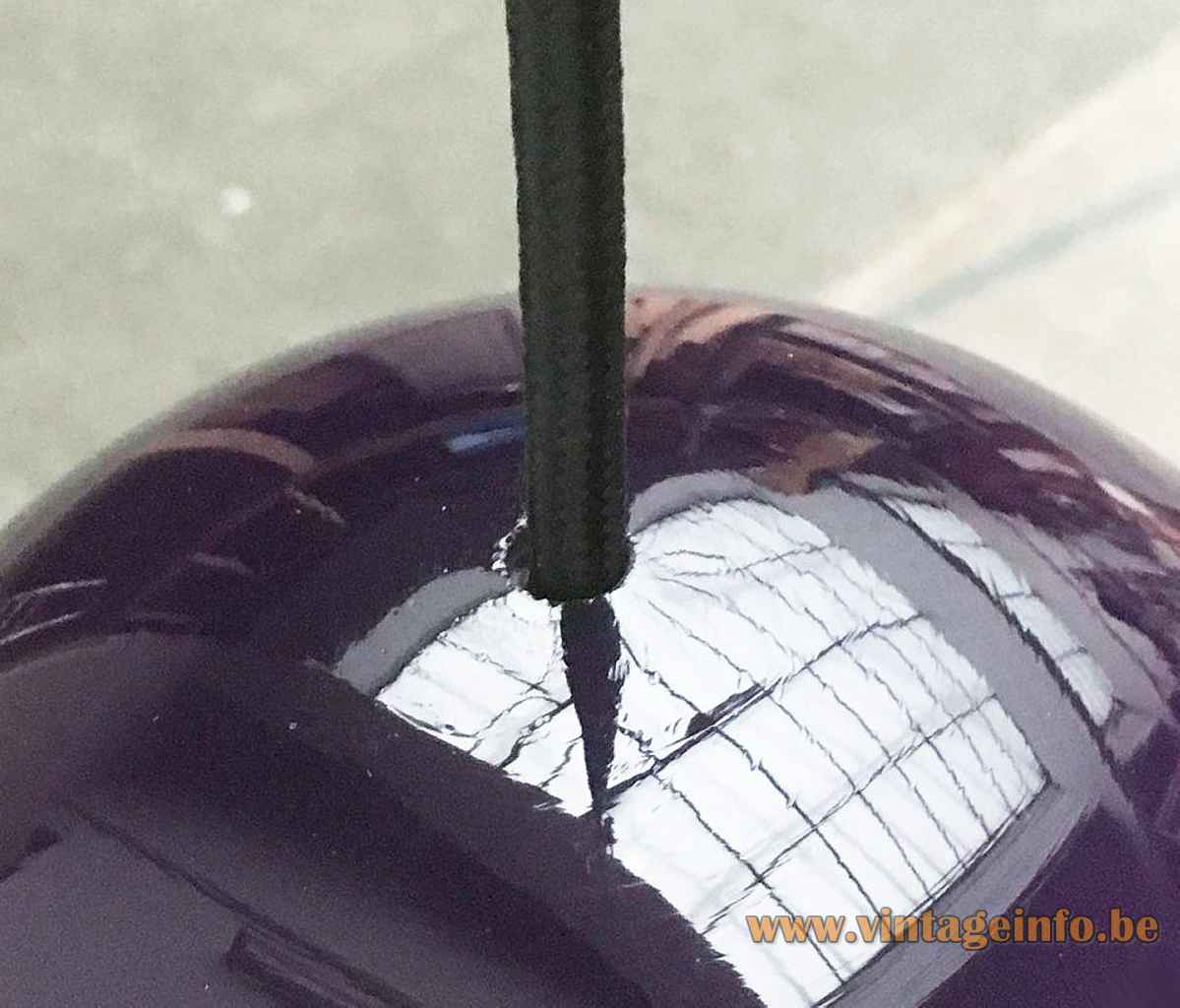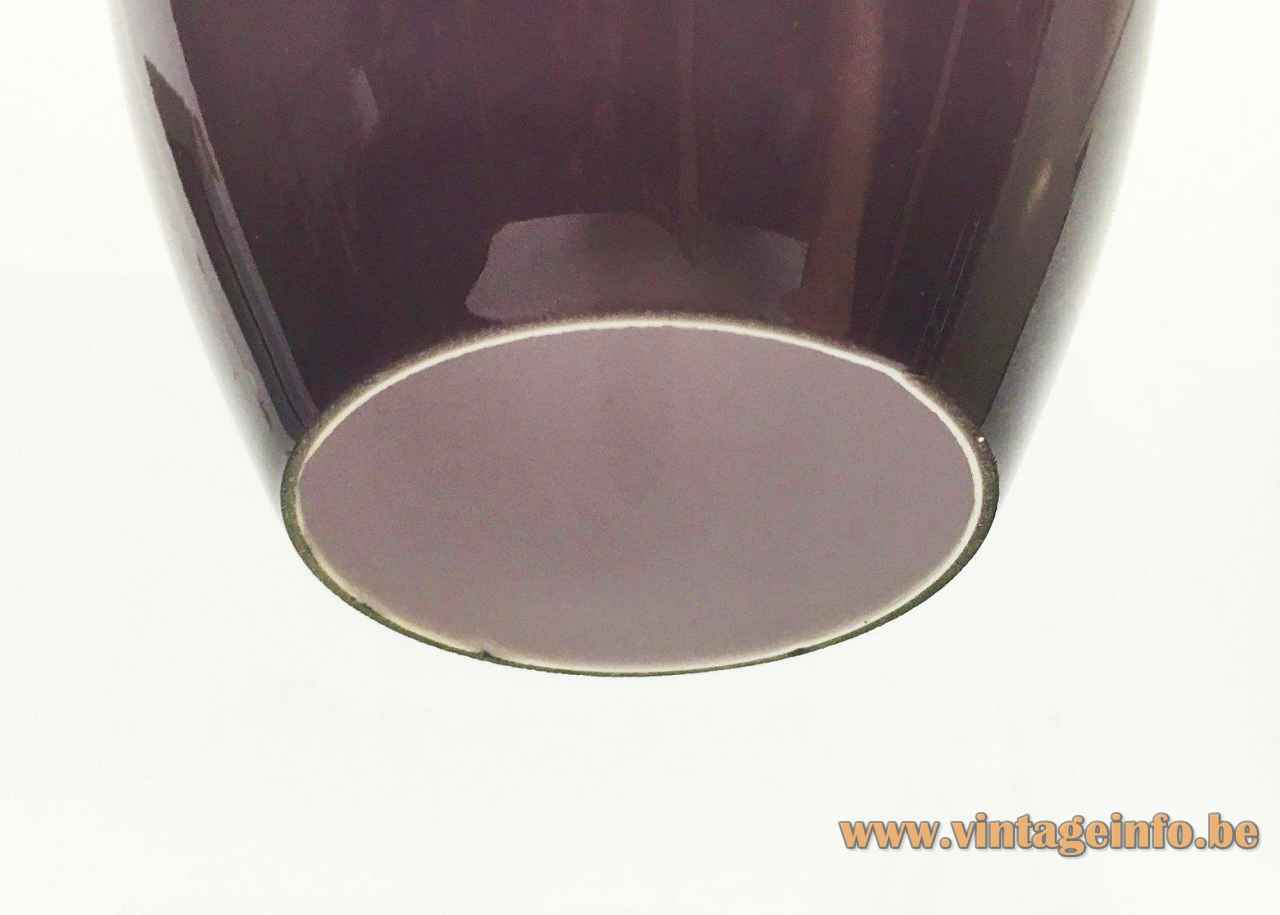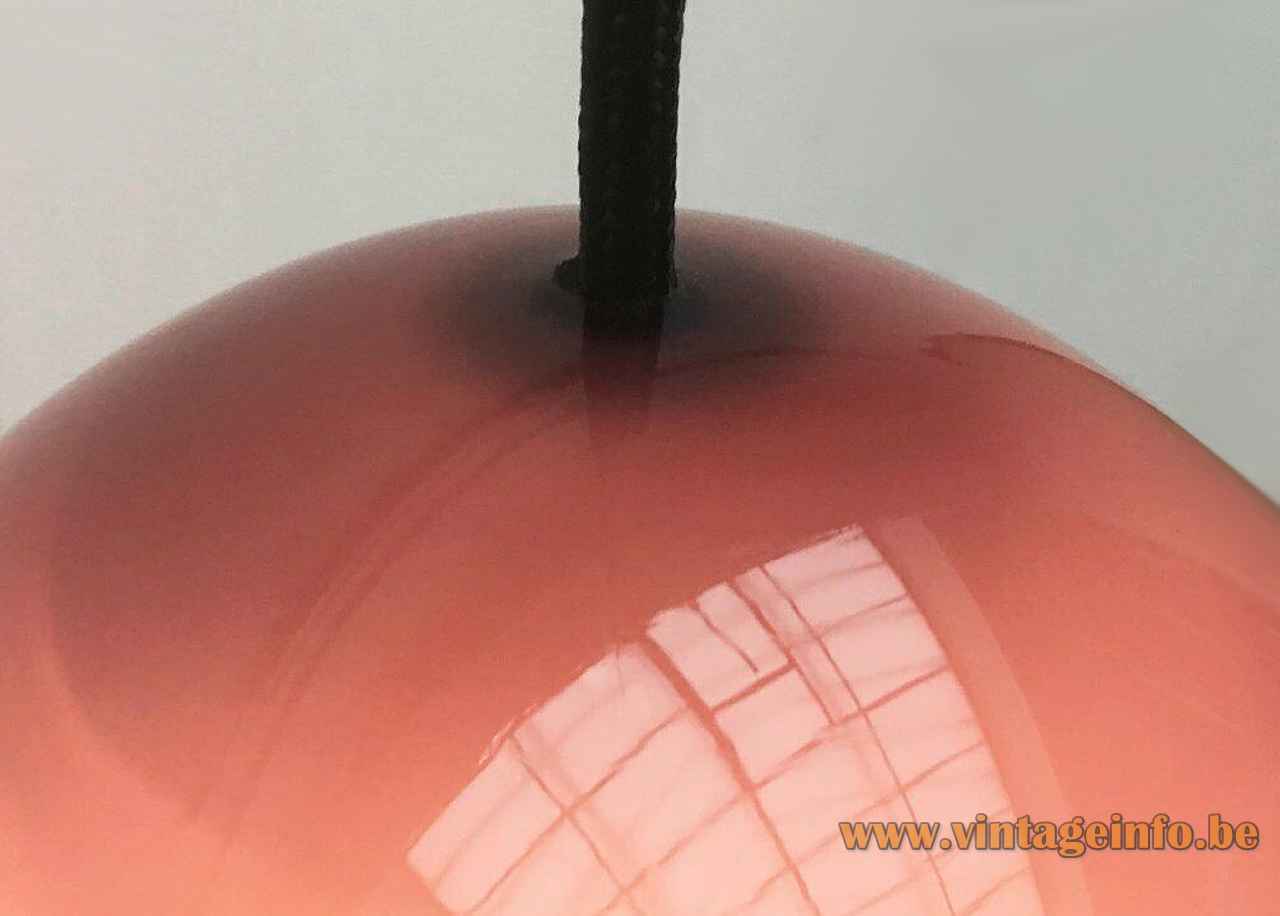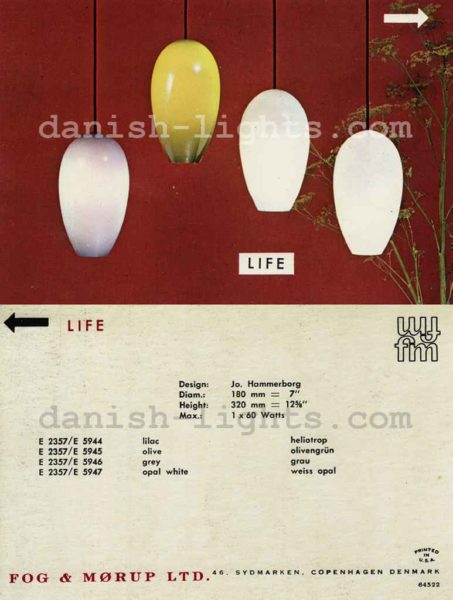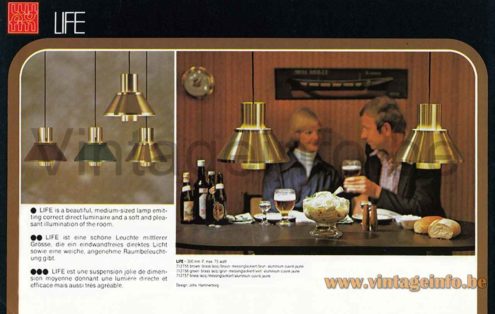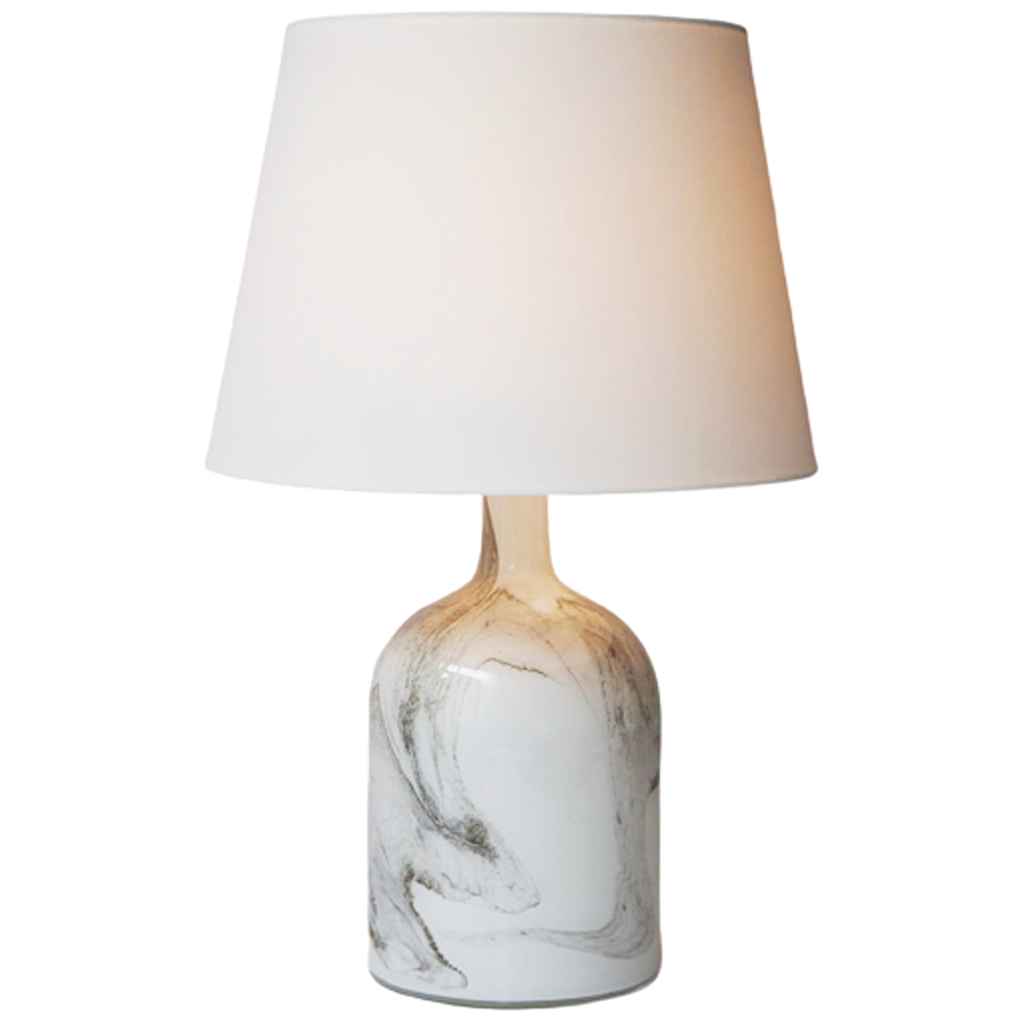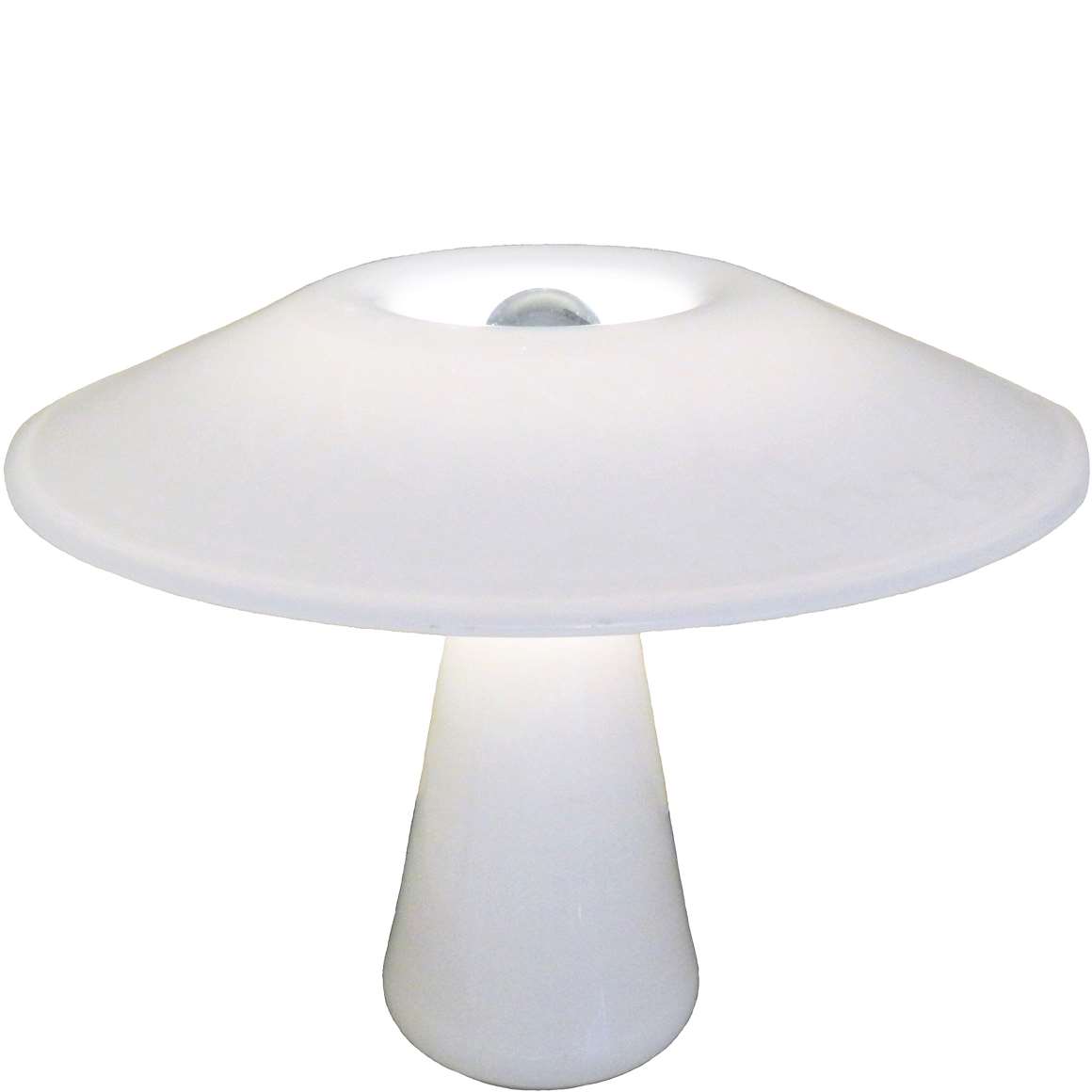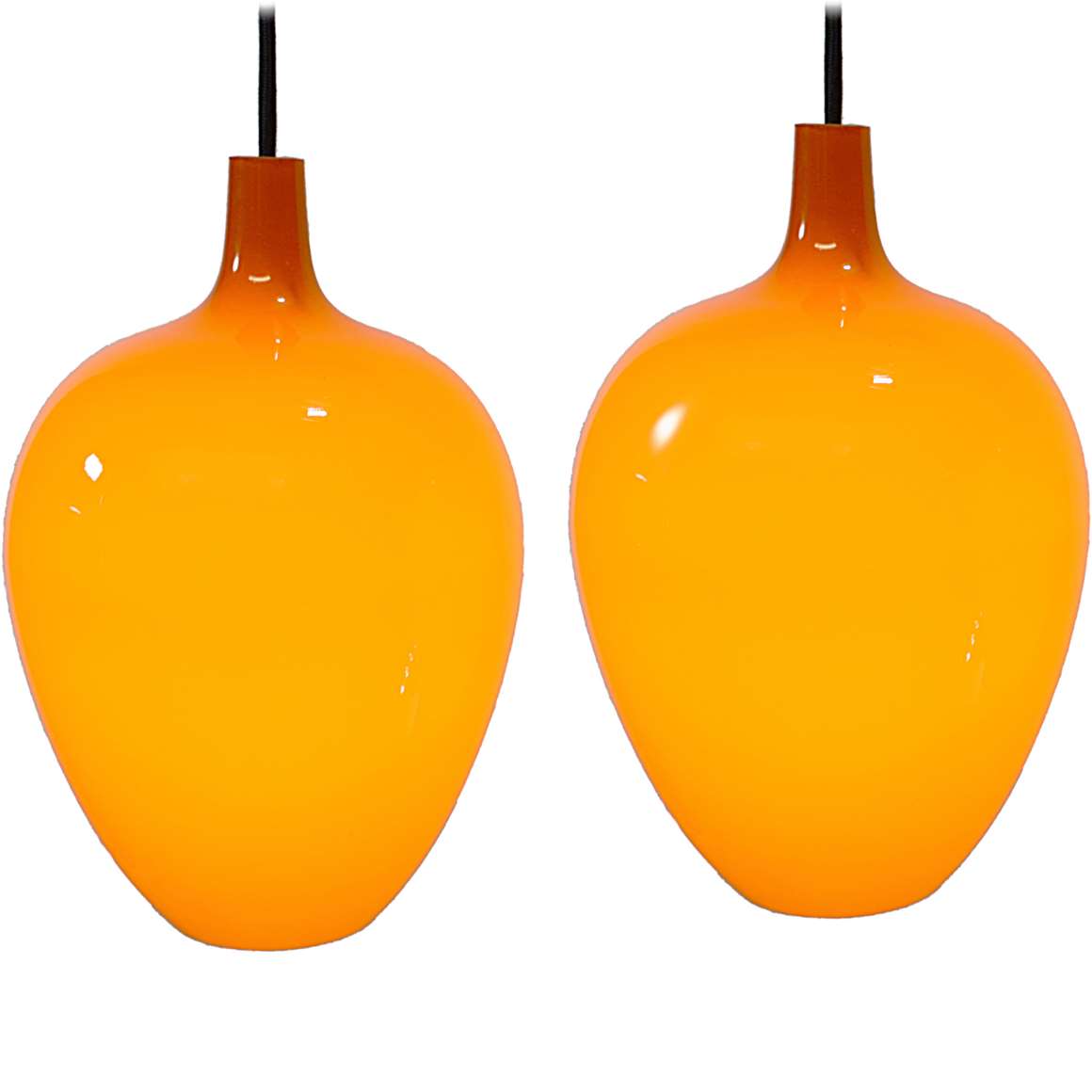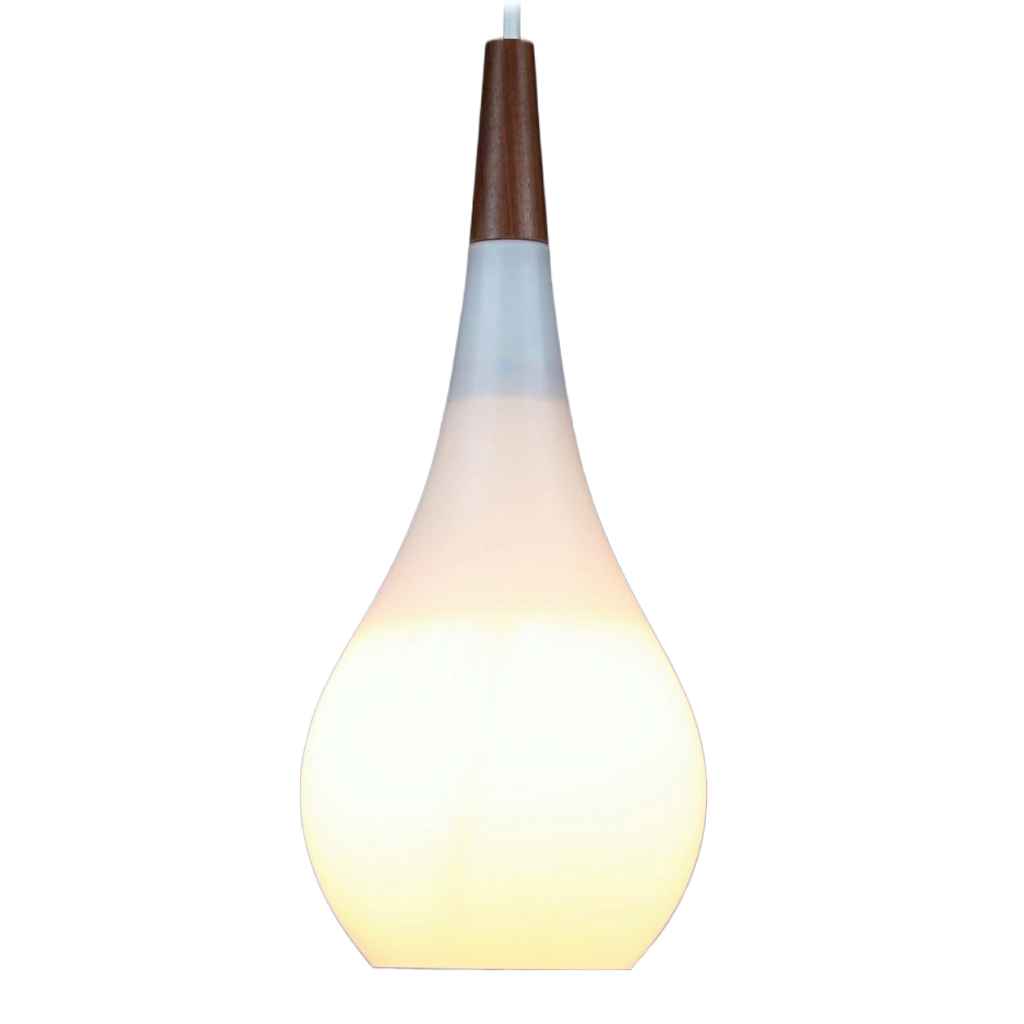Fog & Mørup Life Pendant Lamp – 1963 Catalogue Picture
Fog & Mørup Life Pendant Lamp – 1976 Catalogue Picture
Holmegaard
The Holmegaard glass-works factory was founded around 1820 by Count Christian Danneskiold-Samsøe in the town of Holmegaard Mose (“Holmegaard Bog”), but he needed permission from the King of Denmark.
The Count died in 1823 without receiving an answer from the king. A short while after his dead, permission was granted and his wife Countess Henriette Danneskjold-Samsøe started the business. Production began in 1825.
In the beginning the company produced only green bottles, but within its first decade production was shifted on to table-glass.
During the 20th century, artists such as Jacob Eiler Bang (1899-1965) entered the equation, designing and shaping Holmegaard’s glass products. Designer Per Lütken (1916-98), and Jacob Bang’s son, Michael (1944-2002) joined the firm and brought it to what it is now: a well known company, famous for its high-quality products of Danish design.
Today Holmegaard is part of the Rosendahl Design Group.
Fog & Mørup Life Pendant Lamp
Materials: Hand blown crystal glass droplet style lampshade. White on the inside, clear purple on the outside (incamiciato). Some metal parts. Bakelite E27 socket.
Cord Length: 80 cm / 31.49”
Height: 32 cm / 12.59”
Width: ∅ 18 cm / 7.08”
Electricity: 1 bulb E27, 1 x 75 watt maximum, 110/220 volt.
Any type of light bulb with an E27 screw base can be used.
Period: 1960s – Mid-Century Modern.
Designer: Jo Hammerborg (1920-1982).
Manufacturer:Fog & Mørup A/S and Holmegaard, Denmark.
Other versions: This Fog & Mørup Life pendant lamp exists in a few colours, but only in one size. A chandelier with several pendant lamps together also exists.
Fog & Mørup produced another lamp with the same name in the 1970s, as you can see in the catalogue pictures. It was also designed by Jo Hammerborg. You can find it over here.
Incamiciato: Overlay lattimo glass (= milky looking glass) with a layer of transparent coloured glass. It’s an Italian word, because the technique was invented on the Murano Island of Venice.
The glass of this Fog & Mørup Life pendant lamp was made by Holmegaard, another Danish company. Holmegaard produced many lamps for Fog & Mørup.
Jo Hammerborg
Johannes (Jo) Hammerborg was born on 4 February 1920 in Denmark. He grew up on the outskirts of Randers in a middle-class family, trained as a silversmith and, during 1940–45, served in the Danish resistance as a saboteur. After the war he studied at the Royal Danish Academy of Fine Arts and worked as a silversmith at Georg Jensen.
In 1957 Hammerborg became head of design at Fog & Mørup, a role he held until 1980. A pronounced idea-driven designer with a clear philosophy of form, function and restraint, he was a key force behind the company’s most creative and commercially successful years. He personally designed around 180 lamps for Fog & Mørup and also collaborated in refining others’ models; several of his designs received international awards. After a series of mergers beginning in 1980, Fog & Mørup eventually ceased production of his designs in the late 1990s.
Outside his professional life, Hammerborg was an avid and versatile athlete, a pilot and a pioneer in parachuting. He died in 1982, aged 62, in a parachuting accident.
Fog & Mørup
Ansgar Fog (1880–1930) and Erik Mørup (1879–1972) founded their business in 1904 as a metalwork wholesaler. Two years later they moved to Copenhagen, shifted their focus to lighting production, and over time acquired several electrical and lighting companies. Fog & Mørup emerged as a key force in lighting design in the early 1960s, following the appointment of Jo Hammerborg as head of design in 1957.
Notable designers and architects who worked with the company include: Claus Bonderup, Torsten Thorup, Sidse Werner, Sophus Frandsen, Jørgen Bo, E. Balslev, Peter Avondoglio, Karen Clemmensen, Ebbe Clemmensen, Hans Due, and of course Jo Hammerborg.
Lyfa
In the late 1970s, Fog & Mørup merged with Lyfa, another leading Danish lighting producer. In 1980 Jo Hammerborg retired. A few years later, Lyfa–Fog & Mørup was taken over by Lyskær, and the name changed to Lyskaer–Lyfa.
Lyskaer–Lyfa produced lights until 1991, when it was incorporated into Horn Belysning A/S of Aalstrup, Denmark, which was itself taken over in 2005 by Nordlux of Ålborg and, to a large extent, dismantled.
Horn Belysning
Horn Belysning A/S was founded in 1952 as a family business, initially named E.S. Horn. In 1963 it became Horn Belysning (Horn Lighting).
The company produced lighting for IKEA and several other European retail chains. It designed products and also imported lighting from China. In the 1980s Horn was the second-largest lighting company in Denmark.
In 2005 the name changed to Lightyears, which today is owned by Republic of Fritz Hansen.
Links (external links open in a new window)
Fog & Mørup Life pendant lamp – Danish-Lights.com
Fog & Mørup Life pendant lamp – metal lamp – Danish-Lights.com
Lightyears – Republic of Fritz Hansen
Horn Belysnign history -Danish Vintage Design
The story of Fog & Mørup, Danish modern lighting superstar: www.classic-modern.co.uk/fog_morup
Vintageinfo
Aluminium Life pendant lamp – 1970s
Many thanks to Frank from nullviernull raum+kommunikation for the beautiful pictures. You can find his shop over here on Ebay.



